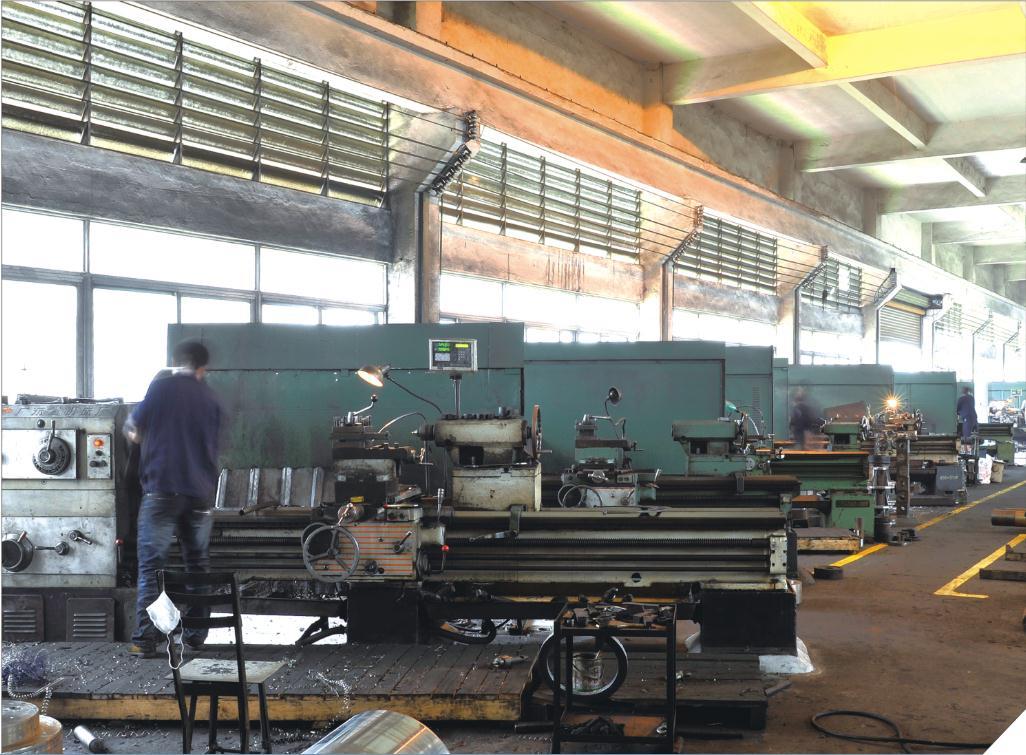What is a servo press?
Release time:
2021-03-12
Servo presses replace the ordinary motor of a hydraulic press with a servo motor. The slide movement curve of a servo press can be set according to the stamping process, and the stroke is adjustable. This type of press is mainly used for the high-precision forming of difficult-to-form materials and complex-shaped parts. It significantly improves press stamping efficiency, reduces production costs, and saves energy.

Therefore, the hybrid drive is currently a direction for press development. This is to overcome the limitations of servo motors, using a differential wheel to achieve hybrid input from ordinary motors and servo motors, and using a two-degree-of-freedom rod system to achieve a closed-loop double-point press.
Servo presses have high versatility, flexibility, and intelligence. Due to their servo function, the slide movement curve is no longer just a sine curve but can be any curve optimized according to process requirements.
Because a linear grating scale is used to detect the slide position, the slide has high motion control accuracy throughout the entire press operation, ensuring the accuracy and stability of the closing height during production, preventing product burrs, and avoiding defective products.
Servo presses have high productivity. Servo presses retain the advantages of crank presses, especially their much higher productivity than hydraulic presses. Furthermore, servo motor-driven crank presses can adjust the slide stroke according to different workpieces. In one work cycle, it does not need to complete 360 a full rotation but only needs to swing a certain angle to complete the stamping work, further shortening the cycle time, minimizing unnecessary travel, and greatly improving productivity.
Servo presses are versatile and suitable for various processes such as punching, blanking, bending, flanging, and shallow drawing, so they are used in many industries.
AC servo presses have good versatility, flexibility, and intelligence. Due to their servo function, the slide movement curve is no longer just a sine curve but can be any curve optimized according to process requirements, which helps improve the processing performance of the press and expands the processing range.
Because a linear grating scale is used for closed-loop control of the slide position, the slide has high motion control accuracy. Even with eccentric loading, the slide accuracy can always be maintained within micrometer-level changes, ensuring the stability of the press closing height during production, preventing product burrs, and avoiding defective product input.
The above is some information about servo presses. Hope it helps!
Recommended products
2023-05-12
What are the characteristics of a hydraulic press?
CNC hydraulic oil pumps generally use internal gear pumps, while traditional hydraulic presses generally use axial piston pumps. At the same flow rate and pressure, the noise of an internal gear pump is 5 dB to 10 dB lower than that of an axial piston pump. The motor of a CNC hydraulic press runs at rated speed during pressing and return, and its noise emission is 5 dB to 10 dB lower than that of a traditional hydraulic press. When the slider rapidly descends and is stationary, the servo motor speed is 0, so the CNC hydraulic press has essentially no noise emission.
2015-08-25
Application scope and system selection of small hydraulic presses
Suitable applications for small hydraulic presses include: 1. Punching various silicone and plastic buttons for mobile phones or remote controls, and cutting plastic products; 2. Cutting various protective films for mobile phones, digital cameras, and laptop LCD screens, as well as precision cutting and halving of various pressure-sensitive adhesives and trademarks; 3. Embossing, forming, etc., of various PV, PE, PC and other thin-film switches and panels; 4. Pressing and forming various flexible circuit lines for laptop keyboards, etc. Small hydraulic presses use original Taiwanese or Japanese parts for the hydraulic power system, resulting in fewer malfunctions, high efficiency, low noise, low horsepower requirements, easy maintenance, and convenient adjustment of output, speed, and stroke.
2014-04-29
Technology Daily (Reporter Shi Junbin, Correspondent Jiao Yue) Recently, a 19,500-ton free forging hydraulic press and a 300-ton/750-ton-meter full hydraulic forging manipulator, independently developed by China Heavy Industry Corporation, successfully completed their first hot load test run in Jiangyin, Jiangsu Province. This marks the completion of the world's largest tonnage free forging hydraulic press and the world's largest clamping force/clamping torque full hydraulic forging manipulator currently in operation, achieving a globally advanced level of overall equipment installation. The 19,500-ton free forging hydraulic press adopts a three-beam, four-column, three-cylinder, top-drive, press-insert, full pre-stressed frame structure. Both the upper and lower beams use pre-stressed composite beams. The maximum forging capacity can reach 4
Contact us
Address: No. 19, Science and Technology East Road, Songxia Industrial Park, Songgang, Nanhai District, Foshan City, Guangdong Province, China
Tel: 0086-0757-85203155
Mobile: 18033239126(Mr. Yang)
Fax: 0086-0757-85203166
Email: info@fs-hongdemachinery.com
Quick Navigation
©2025 Foshan Xin Hongde Machinery Manufacturing Co., Ltd. All rights reserved

